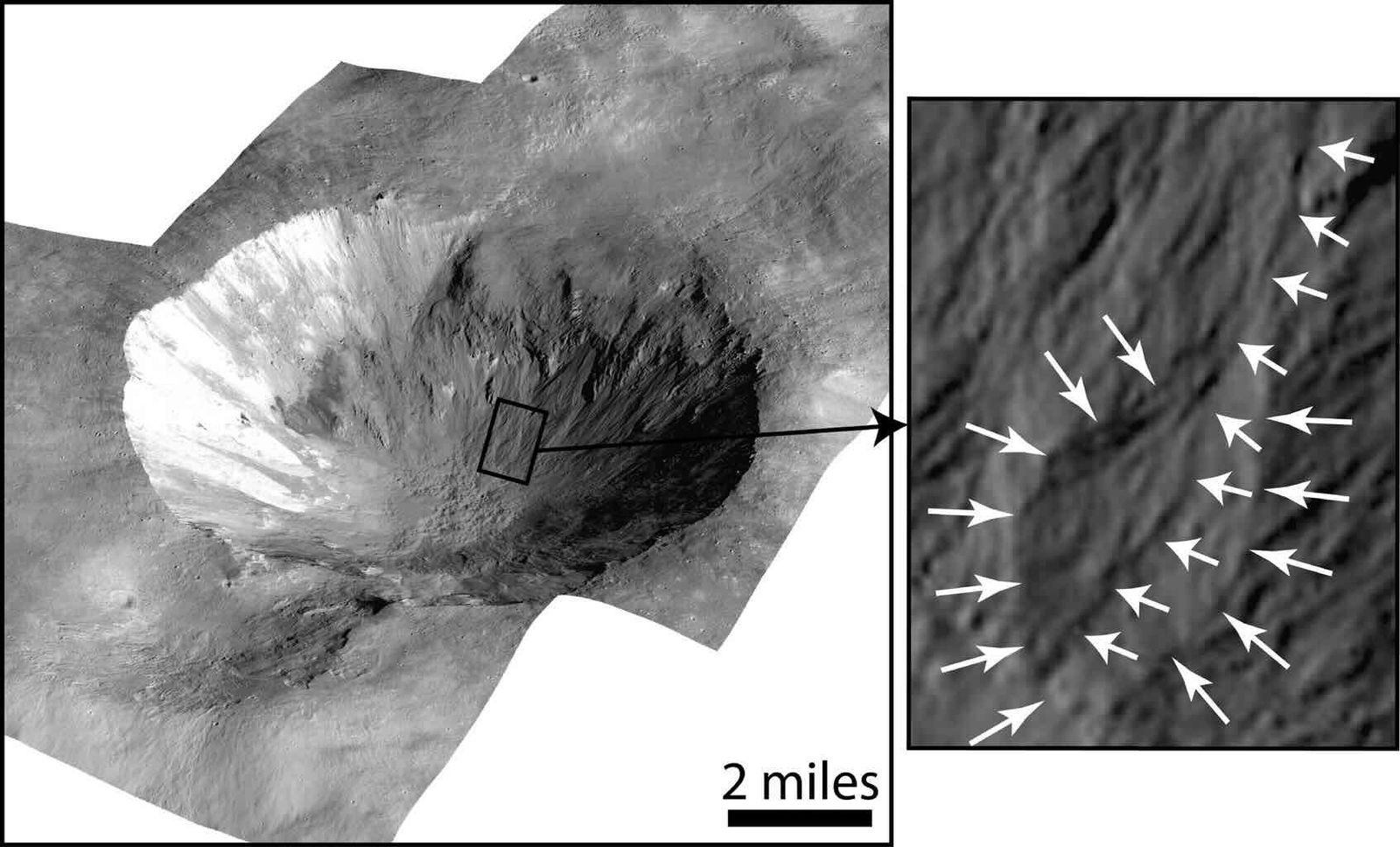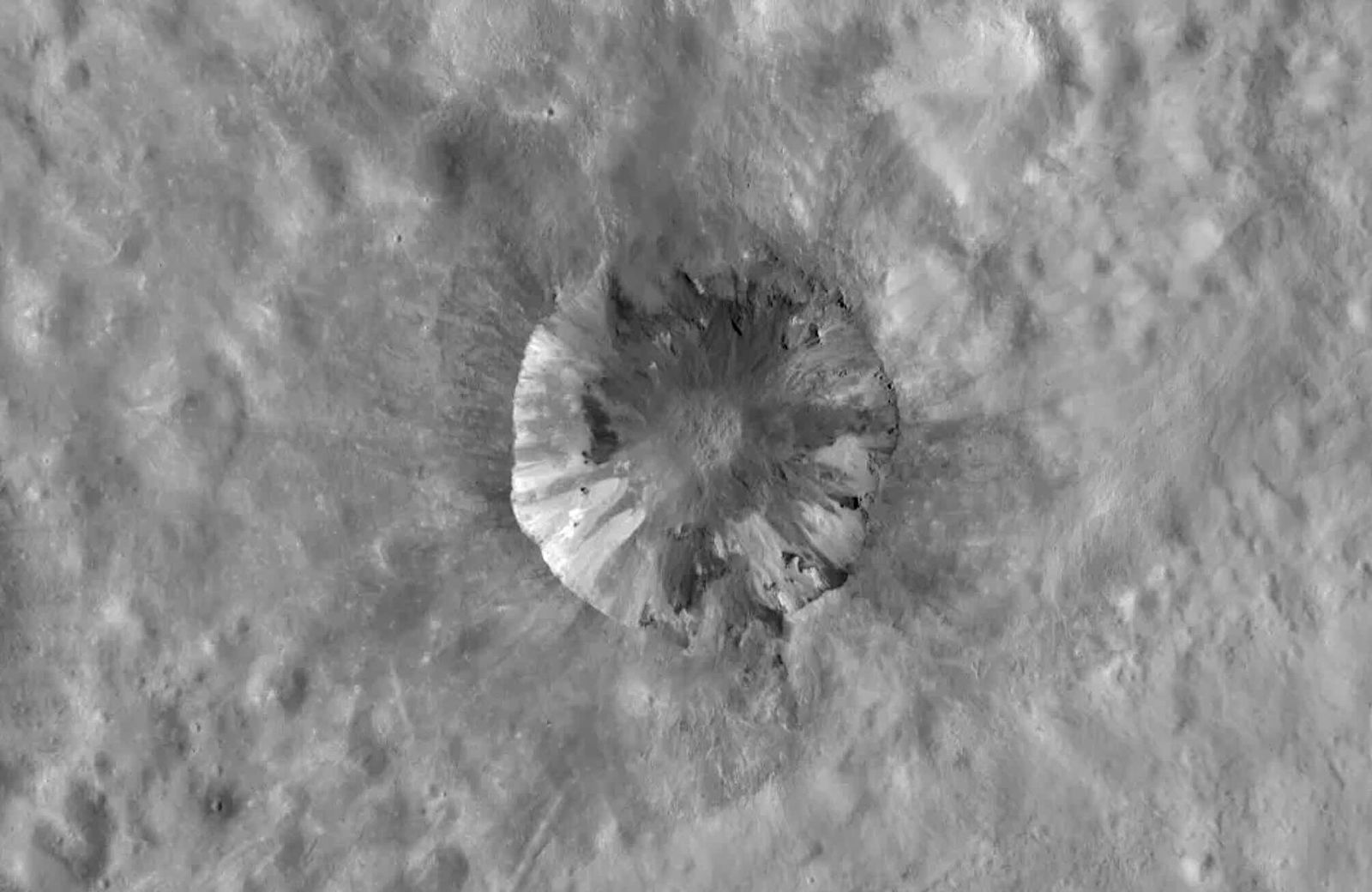Mysterious features detected on the surfaces of planets and asteroids are the focus of new research that seeks to understand what might lie beneath their surfaces, according to newly published findings.
Scientists from the Southwest Research Institute (SwRI) and NASA’s Jet Propulsion Laboratory (JPL) collaborated on the project, investigating how cosmic objects lacking atmospheres could exhibit terrain features typically associated with flowing liquids.
On Earth, flowing water carves out rivers, streams, and caves, while also smoothing rough landscapes. Surprisingly, similar smooth topographical features are found on objects in space, where no liquid flows and no atmosphere exists. Examples include the smooth patches of Europa, Jupiter’s moon, which lack the impact craters seen on Earth’s moon, or the spider-like feature in Europa’s Manannán crater. Additionally, NASA’s Dawn mission observed similar flow features on the Vesta and Ceres asteroids.
One focus of the recent study was Europa’s smooth spots, which are intriguing given the frequency with which natural space debris impacts these objects. Researchers investigated how such impacts might create these features, which differ greatly from typical rough craters. Could these features, in fact, be water-carved, and what hidden mechanisms might enable such processes?
“We wanted to investigate our previously proposed idea that ice underneath the surface of an airless world could be excavated and melted by an impact and then flow along the walls of the impact crater to form distinct surface features,” said Dr. Jennifer Scully, project leader at JPL.
Testing the Role of Hidden Water and Brine
In the vacuum of space, flowing water seems unlikely due to frigid temperatures and the instability of liquids in such conditions. The team conducted experiments in a JPL laboratory designed to replicate the extreme conditions theorized to exist on these bodies. They simulated an impact by rapidly reducing pressure around a liquid sample.
This mimicked the pressure drop caused by an impact, where the force heats liquid beneath a surface and releases vapor, creating a brief, temporary atmosphere before quickly dissipating. The experiment tested both pure water and a briny water-salt mixture.


“Through our simulated impacts, we found that the pure water froze too quickly in a vacuum to effect meaningful change, but salt and water mixtures, or brines, stayed liquid and flowing for a minimum of one hour,” said Dr. Michael J. Poston of SwRI, the study’s lead author. “This was enough time for the brine to destabilize slopes on crater walls on rocky bodies, cause erosion and landslides, and potentially form other unique geological features found on icy moons.”
Implications for Hidden Water in Space
“If the findings hold true across these dry and airless or thin-atmosphere bodies, it suggests that water existed on these worlds in the recent past, meaning water might still be released by impacts,” Poston explained. “There may still be water out there waiting to be discovered.”
The study provides compelling evidence that water may exist in more locations than previously thought, even in some of the most inhospitable environments. This expands the number of places where scientists might search for water in space. Some of this water may even be located near the surface, increasing the possibility of finding extraterrestrial life. As more clues emerge, the evidence for water’s prevalence in space continues to grow.
The research demonstrates convincing evidence that water hides in even more places than previously expected, including some of the most inhospitable. This adds to a growing body of places to look at as evidence grows for water’s frequency in space. Some of this newly discovered water may even reside on a planet’s surface, increasing the likelihood of extraterrestrial life. In the search for off-planet water, the clues are piling up.
The paper “Experimental Examination of Brine and Water Lifetimes after Impact on Airless Worlds” was published on October 21, 2024 in The Planetary Science Journal.
Ryan Whalen covers science and technology for The Debrief. He holds a BA in History and a Master of Library and Information Science with a certificate in Data Science. He can be contacted at ryan@thedebrief.org, and follow him on Twitter @mdntwvlf.

